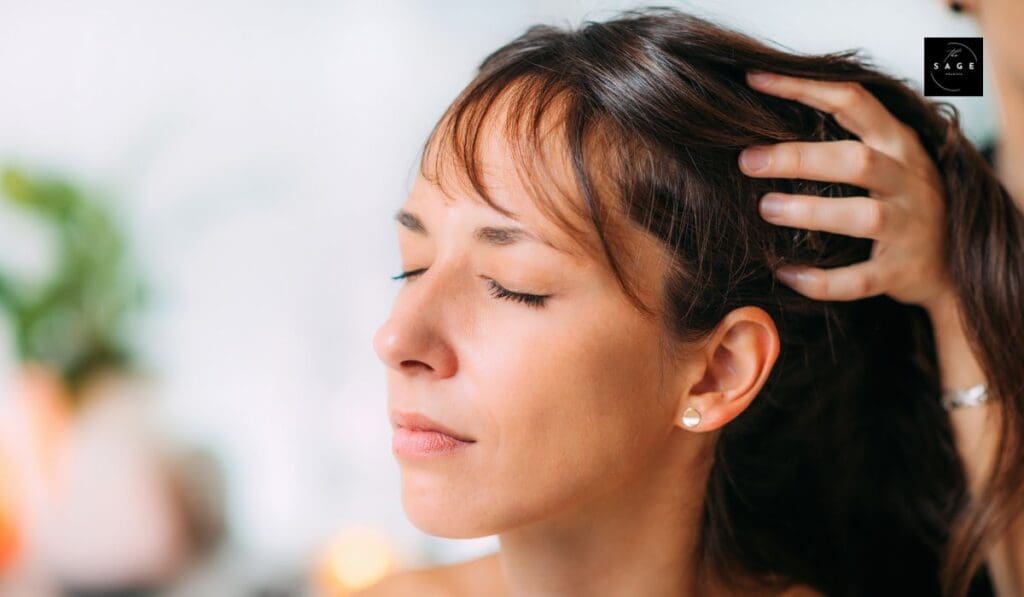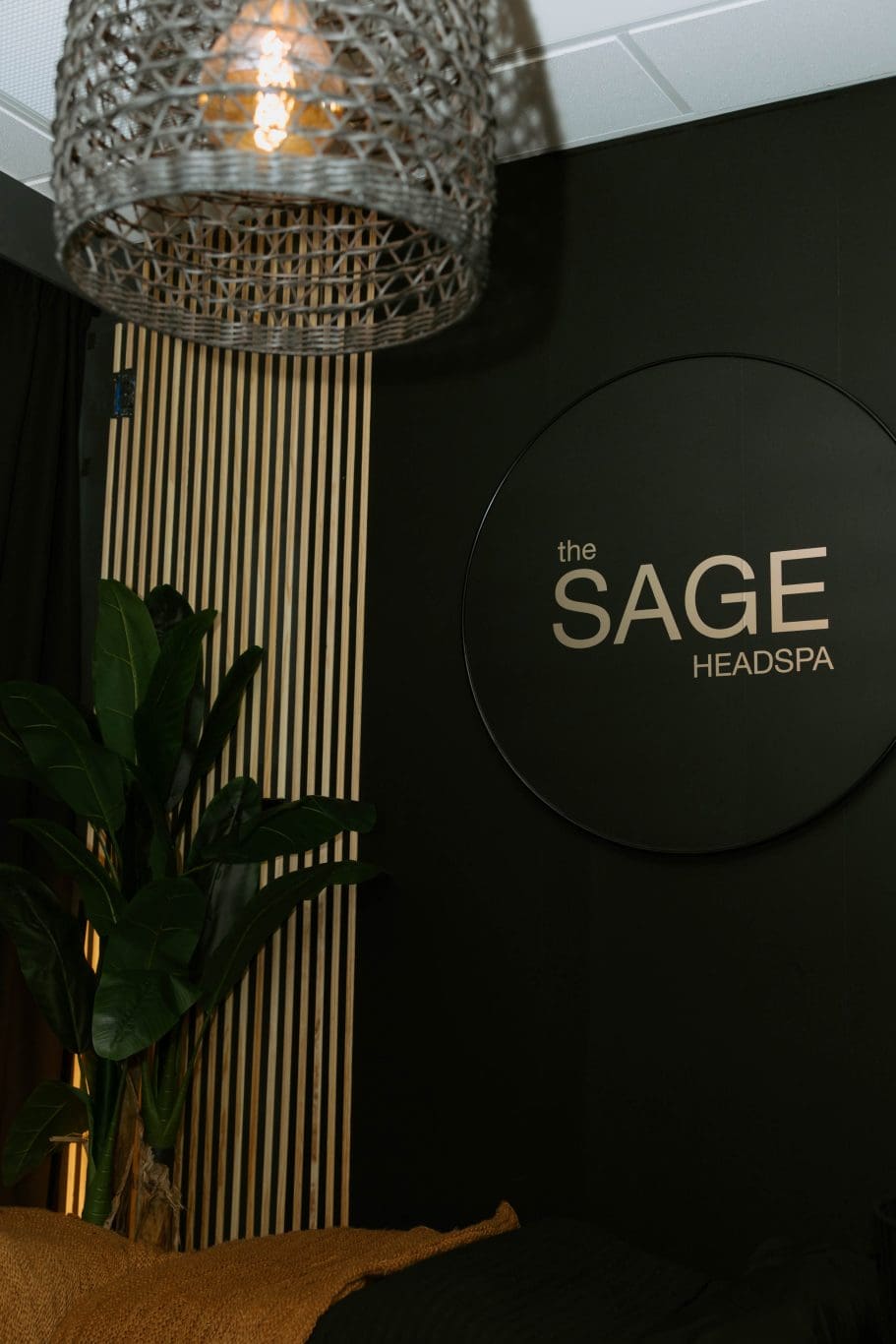In the world of hair care, head spas have emerged as a luxurious and beneficial treatment that caters to all hair types.
Whether you have curly, straight, wavy, thin, thick, dry, or oily hair, a head spa can work wonders.
This ultimate guide will walk you through everything you need to know about head spas, from their benefits to the types of treatments available and tips for maintaining healthy hair post-treatment.
What is a Head Spa?
A head spa is a specialized salon treatment focused on the scalp and hair.
It combines deep cleansing, massage, and hair treatments to promote a healthy scalp and beautiful hair.
The process typically involves the use of various products like oils, masks, and serums, along with techniques such as steaming, exfoliation, and massage to rejuvenate the scalp and nourish the hair.

Benefits of a Head Spa
Scalp Health: A head spa treatment deeply cleanses the scalp, removing excess oil, dandruff, and product build-up. This promotes a healthy environment for hair growth.
Hair Strength and Shine: The nourishing treatments used in a head spa help strengthen hair follicles, reduce breakage, and add a natural shine to the hair.
Stress Relief: The massage component of a head spa not only feels incredibly relaxing but also helps reduce stress and tension, which can positively impact overall health.
Improved Blood Circulation: Scalp massages improve blood circulation, ensuring that hair follicles receive essential nutrients, which can stimulate hair growth.
Detoxification: The detoxifying effects of a head spa can help remove toxins from the scalp, promoting overall hair health and vitality.
Head Spa Treatments for Different Hair Types
For Curly Hair
Curly hair often requires more moisture and can benefit significantly from hydrating treatments. A head spa for curly hair typically includes:
- Deep Moisturizing Masks: These masks hydrate and define curls, preventing frizz and dryness.
- Steam Treatment: Steaming opens up the hair cuticles, allowing the moisturizing products to penetrate deeply.
- Gentle Scalp Exfoliation: This removes product build-up without stripping the natural oils that curls need to stay healthy.
For Straight Hair
Straight hair can become oily quickly and may lack volume. Head spa treatments for straight hair focus on the following:
- Balancing Treatments: These help control oil production and keep the scalp balanced.
- Volumizing Masks: These masks add body and lift to straight hair, preventing it from looking flat.
- Clarifying Treatments: These remove any build-up that can weigh down straight hair, leaving it light and bouncy.
For Wavy Hair
Wavy hair sits between straight and curly and can benefit from treatments that provide both hydration and volume. A head spa for wavy hair often includes:
- Hydrating Masks: These maintain the hair’s natural wave pattern and prevent frizz.
- Scalp Massages: Massages help stimulate hair growth and keep the scalp healthy.
- Lightweight Serums: These add shine and definition without weighing down the waves.
For Thin Hair
Thin hair is prone to breakage and can appear limp. Head spa treatments for thin hair focus on strengthening and adding volume:
- Strengthening Treatments: Protein-rich masks help fortify thin hair and reduce breakage.
- Volumizing Serums: These add body and fullness without making the hair greasy.
- Scalp Massage: Gentle massages stimulate blood flow and encourage hair growth.
For Thick Hair
Thick hair can be challenging to manage and often needs deep conditioning. A head spa for thick hair includes:
- Intensive Conditioning Masks: These penetrate deeply to hydrate and soften thick hair.
- Detangling Treatments: These make thick hair more manageable and more accessible to style.
- Scalp Exfoliation: This removes excess oil and keeps the scalp healthy.
For Dry Hair
Dry hair needs intense hydration and nourishment. Head spa treatments for dry hair include:
- Moisturizing Masks: These provide deep hydration to combat dryness and frizz.
- Oil Treatments: Oils like argan or coconut oil nourish and add shine to dry hair.
- Steam Therapy: Steaming opens the hair cuticles, allowing the moisturizing products to penetrate effectively.
For Oily Hair
Oily hair requires balancing treatments that control excess sebum production. Head spa treatments for oily hair focus on the following:
- Clarifying Shampoos: These remove excess oil and product build-up.
- Balancing Masks: These help regulate oil production and keep the scalp balanced.
- Exfoliation: This removes dead skin cells and unclogs hair follicles.
The Head Spa Experience: What to Expect
Consultation: The treatment begins with a consultation to understand your hair type, scalp condition, and specific needs.
Scalp Analysis: Some salons use advanced technology to analyze your scalp and hair, tailoring the treatment to your particular requirements.
Deep Cleansing: The process starts with a deep cleansing shampoo to remove any build-up from the scalp and hair.
Scalp Massage: A relaxing scalp massage follows, promoting blood circulation and relieving stress.
Treatment Application: Depending on your hair type, the appropriate masks, oils, or serums are applied to the scalp and hair.
Steam Therapy: Steaming helps the products penetrate deeply, ensuring maximum benefit.
Rinsing and Conditioning: After the treatment, the hair is rinsed and conditioned to lock in moisture and nutrients.
Final Massage and Blow-Dry: The treatment concludes with a final massage and a blow-dry, leaving your hair looking and feeling rejuvenated.
Post-Treatment Care
To maintain the benefits of a head spa, follow these tips:
- Use Sulfate-Free Shampoos: These are gentle on the scalp and hair, preserving the treatment’s effects.
- Regular Scalp Massages: Incorporate scalp massages into your routine to promote blood circulation and hair growth.
- Avoid Heat Styling: Minimize the use of heat styling tools to prevent damage and dryness.
- Balanced Diet: A diet rich in vitamins and minerals supports healthy hair growth.
Conclusion
Head spas offer a luxurious and beneficial treatment for all hair types, promoting scalp health, hair strength, and overall relaxation.
Whether you have curly, straight, wavy, thin, thick, dry, or oily hair, a head spa can be tailored to meet your specific needs.
By understanding the benefits and knowing what to expect, you can make the most of this rejuvenating experience and enjoy healthy, beautiful hair.
Treat yourself to a head spa and feel the difference it makes to your hair and well-being.
For more information or to book your appointment, visit us at Sage Head Spa.
FAQs
What is a Head Spa?
A head spa is a specialized salon treatment focused on the scalp and hair. It combines deep cleansing, massage, and hair treatments to promote a healthy scalp and beautiful hair. The process typically involves various products like oils, masks, and serums, along with techniques such as steaming, exfoliation, and massage to rejuvenate the scalp and nourish the hair.
What are the Benefits of a Head Spa?
Scalp Health: A head spa treatment deeply cleanses the scalp, removing excess oil, dandruff, and product build-up. This promotes a healthy environment for hair growth.
Hair Strength and Shine: The nourishing treatments used in a head spa help strengthen hair follicles, reduce breakage, and add a natural shine to the hair.
Stress Relief: The massage component of a head spa not only feels incredibly relaxing but also helps reduce stress and tension, which can positively impact overall health.
Improved Blood Circulation: Scalp massages improve blood circulation, ensuring that hair follicles receive essential nutrients, which can stimulate hair growth.
Detoxification: A head spa’s detoxifying effects can help remove toxins from the scalp, promoting overall hair health and vitality.
Are Head Spa Treatments Suitable for All Hair Types?
Yes, head spa treatments can be customized to suit any hair type, including curly, straight, wavy, thin, thick, dry, and oily hair. The treatments are tailored to address specific hair and scalp needs, ensuring optimal results for everyone.
How Often Should I Get a Head Spa Treatment?
For optimal results, it is recommended to get a head spa treatment every 4-6 weeks. However, the frequency may vary based on your hair type and specific needs. Your stylist can provide personalized advice during your consultation.
Can I Do a Head Spa Treatment at Home?
While professional head spa treatments offer the most comprehensive benefits, you can also perform a simplified version at home using high-quality products. Focus on deep cleansing, moisturizing, and regular scalp massages to maintain a healthy scalp and hair.
Are Head Spa Treatments Safe for Color-Treated Hair?
Yes, head spa treatments can be safe for color-treated hair, but it’s essential to inform your stylist about your hair color treatment. They can choose products that are safe for color-treated hair and avoid any treatments that might strip the color. Hydrating and moisturizing treatments are particularly beneficial for maintaining the health and vibrancy of color-treated hair.
How Long Does a Head Spa Treatment Take?
A typical head spa treatment can take anywhere from 60 to 90 minutes, depending on the specific treatments and techniques used. The duration may vary based on your hair type, scalp condition, and the salon’s procedures.
What is the Cost of a Head Spa Treatment?
The cost of a head spa treatment can vary widely depending on the salon, the complexity of the treatment, and your location. On average, you can expect to pay between $50 and $150 per session. Some high-end salons may charge more for specialized treatments and advanced scalp analysis.
Can a Head Spa Treatment Help with Dandruff?
Yes, a head spa treatment can help manage dandruff by deeply cleansing the scalp, removing flakes, and balancing oil production. Exfoliating scrubs and clarifying shampoos used during the treatment can effectively address dandruff and promote a healthier scalp environment.



